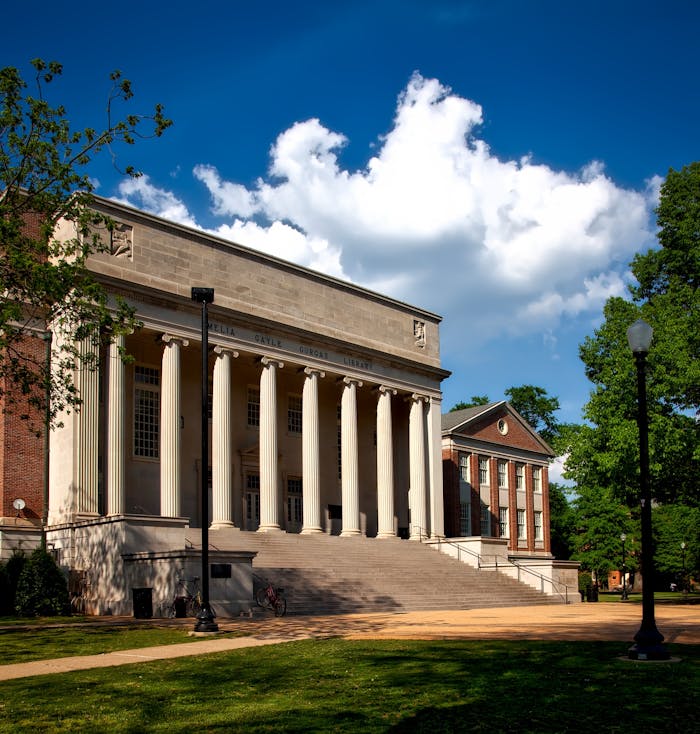At Harmony Hills K-12 School, every brick and column has a purpose. Our beautiful main building, inspired by classical architecture, is more than just visually impressive—it’s designed intentionally to enhance the educational experience and foster student success.
The Impact of Architecture on Student Achievement
Studies consistently show a direct relationship between school architecture and student outcomes. Factors such as natural lighting, air quality, acoustics, and thoughtful spatial layouts can significantly boost student performance, concentration, and emotional well-being. At Harmony Hills, our main academic building is meticulously crafted with these principles in mind:
- Natural Lighting: Large windows and strategic skylights flood classrooms and common areas with sunlight, reducing eye strain, improving mood, and increasing alertness throughout the school day.
- Open and Inviting Spaces: Wide hallways, open staircases, and comfortable communal areas encourage collaboration among students, supporting social skills and teamwork.
- Acoustic Considerations: High ceilings and sound-absorbing materials minimize noise distractions, ensuring clear communication during instruction.
Enhancing Emotional Well-being and School Pride
Architecture deeply influences emotions and attitudes. The majestic columns, stone facades, and grand staircases at Harmony Hills communicate stability, pride, and dignity. This strong visual identity fosters a sense of community and pride among students and staff, positively affecting school attendance and engagement.
- Sense of Belonging: The elegant and timeless design provides students with a strong sense of belonging and identity, helping them feel secure, valued, and motivated.
- Historical Continuity: The classical style represents longevity and tradition, connecting students to past generations and creating a shared history and culture that enriches their educational journey.
Practical Benefits of Thoughtful Design
Beyond aesthetics, our architectural design offers practical, daily benefits:
- Enhanced Safety and Security: Clear sightlines, wide passageways, and easily monitored entrances improve supervision and safety.
- Reduced Stress and Improved Health: Abundant natural elements, such as views of greenery and outdoor learning spaces, contribute significantly to student mental health and stress reduction.
- Versatile Learning Environments: Flexible spaces within and around the building support various learning styles, allowing teachers to implement creative educational approaches effectively.
Architecture as an Educational Tool
At Harmony Hills, architecture itself is leveraged as a powerful educational resource. Lessons on history, mathematics, physics, and art often incorporate elements of our building design, turning the physical environment into a real-world classroom:
- Math and Geometry: Students study geometric principles by examining the symmetry, proportions, and shapes present in the classical architectural design.
- Science and Engineering: Classes discuss structural integrity, materials science, and environmental engineering concepts as illustrated by the construction methods and sustainable features used in our facilities.
- History and Culture: Students gain insight into architectural history, classical civilizations, and cultural symbolism through our building’s stylistic features and decorative elements.
Investing in the Future
Harmony Hills’ commitment to thoughtful architectural design is ultimately an investment in the success of each student. A building that is beautiful, functional, and inspiring motivates learners to achieve their best academically, socially, and emotionally. Our carefully designed spaces communicate that education is valued, respected, and prioritized.
In short, the architecture at Harmony Hills isn’t just about creating an impressive physical space—it’s about empowering our students, nurturing their growth, and providing an environment in which every learner can thrive.



